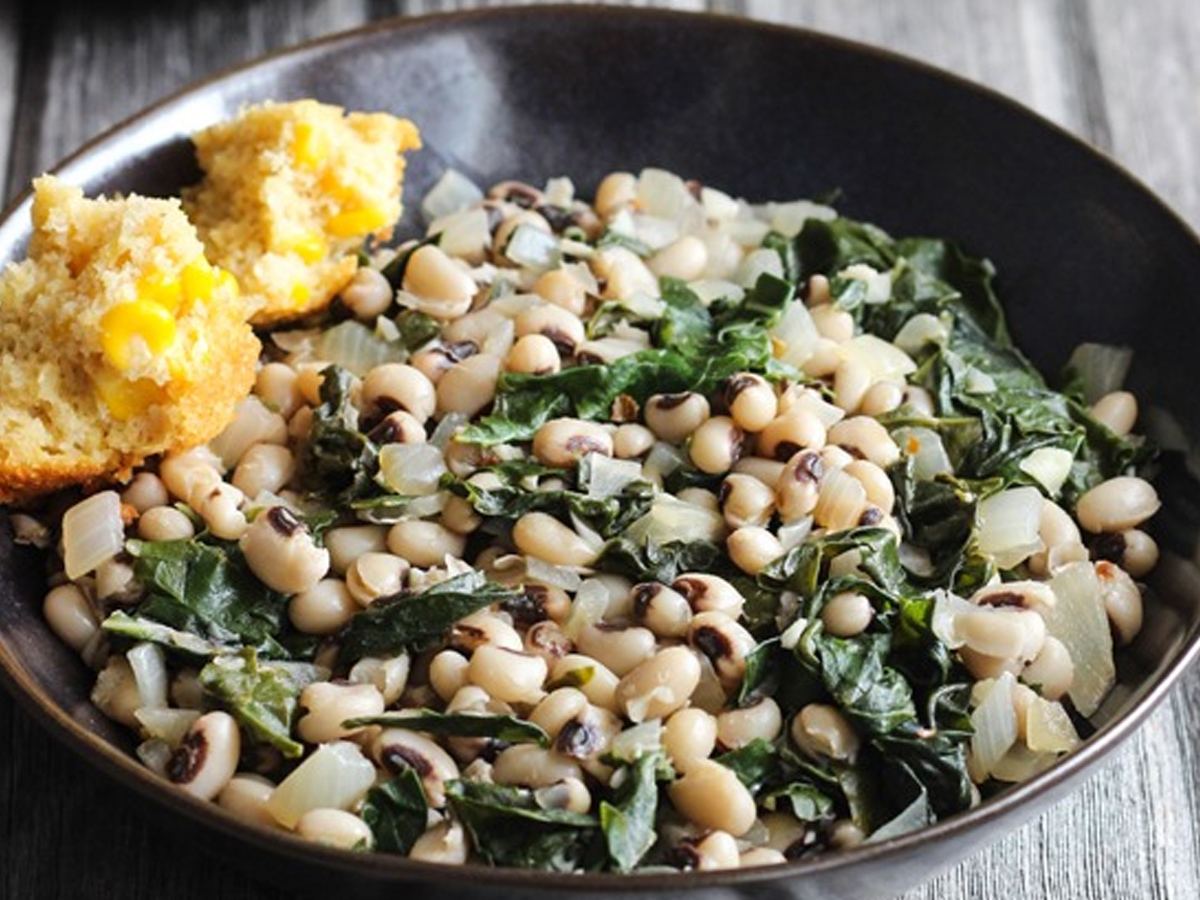Some say the tradition of eating black-eyed peas dates back to the Civil War. Northern troops considered the peas to be suitable only for animals, so they were one of the few edible things left behind by raiding soldiers. The black-eyed peas that were “lucky” enough to be left behind would make their way to Southern tables, especially the tables of Southern slaves who celebrated emancipation as ordered by President Abraham Lincoln on New Year’s Day, January 1, 1863. After the war, peas were always eaten on the first day of January.
Today, the tradition of eating black-eyed peas for the New Year has evolved, as many traditions do, into a number of variations – but most hold the theme of luck and prosperity that harkens back to the Civil War days when people felt lucky to have black-eyed peas to eat and help them survive the cold, harsh winter months. Some of these variations include:
- Serving your black-eyed peas with greens (collards, mustard, or turnip), the peas represent coins and the greens represent paper money.
- Cornbread, often served with black-eyed peas and greens, represents gold.
- For the BEST chance of luck every day in the year ahead, one must eat exactly 365 black-eyed peas, no more or less.
- Black-eyed peas eaten with stewed tomatoes represent wealth and health.
- In some areas, actual values are assigned with the black-eyed peas representing pennies or up to a dollar each and the greens representing anywhere from one to a thousand dollars.
- Adding a shiny penny or dime to the pot just before serving is another tradition practiced by some. When served, the person whose bowl contains the penny or dime receives the best luck for the New Year (unless they swallow the coin!!).
If you have trouble remembering those variations, just think of this old Southern saying, “Peas for pennies, green for dollars, and cornbread for gold”.
Whether or not you believe eating black-eyed peas on New Year’s Day will bring you good luck we still think you should try cooking some up because black-eyed peas and greens are delicious, regardless of when and why you enjoy them!! Check out our recipes for Southern Traditional Hoppin’ John with Black Eyed Peas, Good Luck Greens with Ham Bacon and Skillet Corn Bread to get great luck — and delicious food — coming your way!
Happy New Years from Oliver’s Market!


Comments
Add a commentOutstanding! If it’s found true or not… It’s good to remember our people of old and holdfast what kept their ” Soul”! ❣️
Comment by Pamela Killens on January 1, 2022 at 11:26 am
Black eyed peas are eaten in the African countries from which Africans were abducted and enslaved. It is the key ingredient in Akara/Accra which is an African Black eyed pea fritter. Black eyed peas were eaten first by the enslaved Africans and then the beans made its way to the tables of the slave owners. It is now considered a Southern Food. The tradition of eating black eyed peas on New Years day is also strong in the African-Caribbean diaspora.
Comment by Veyron Lisbet on January 8, 2022 at 6:28 am
Thank you Veyron Lisbet for sharing this additional insight into the historical use of black eyed peas in African countries.
Comment by Aarika on January 3, 2023 at 3:39 pm